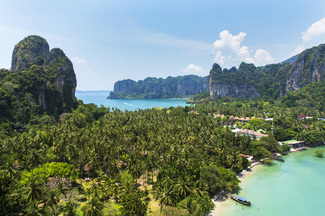PHIMAI HISTORICAL PARK – LEGACY OF THE KHMER EMPIRE
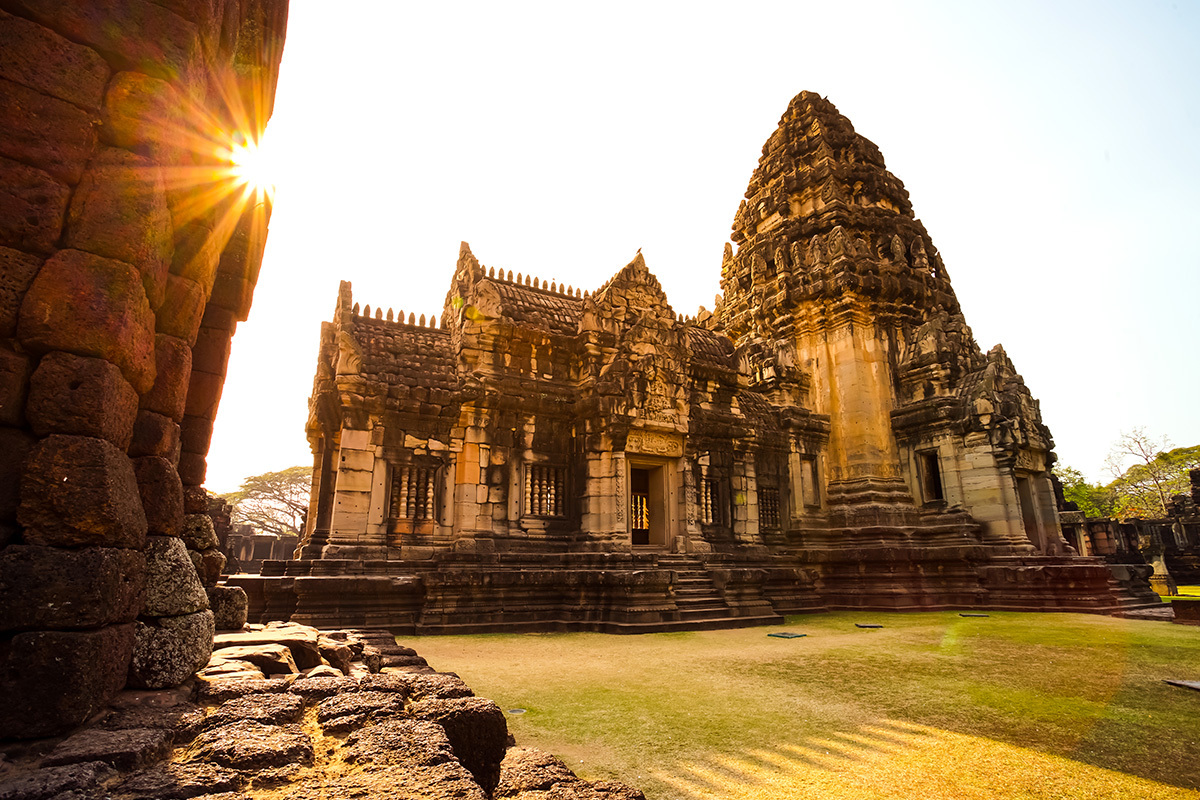
Phimai Historical Park, home to Prasat Hin Phimai temple, is one the finest and best preserved examples of Khmer temple architecture in Thailand. Most of the restoration work carried out on the site was done by the Thai Fine Arts Department from 1964 to 1969. Originally a shrine dedicated to Shiva following Brahmanic traditions, it later became a Mahayana Buddhist temple somewhere around the end of the 12thcentury.
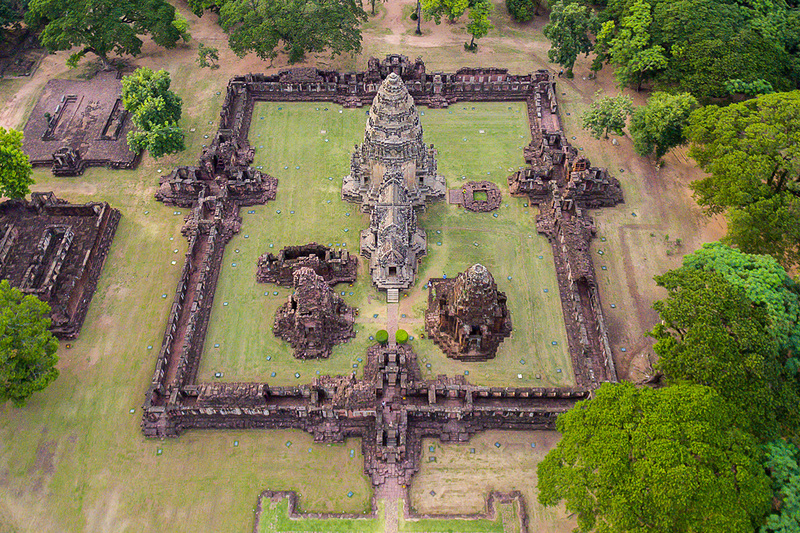
Aerial view of Prasat Hin Phimai
Although there had been a temple at the site since the 8thcentury, Prasat Hin Phimai is believed to have been completed during the reign of Suryarvarman I (1001-1049). The temple lies at one end of the Ancient Khmer Highway from Angkor, and with an area of 655 metres by 1,033 metres it must have been an important religious centre.
Built in the classical Khmer style, using the traditional building materials favoured by Khmer architects of the time, namely bricks and laterite for structural support and sandstone for the outer carved layers, it is a depiction of the universe. The Inner or Central Sanctuary, built using white sandstone, represents Mount Meru at the centre of this universe, and the surrounding walls and open spaces the water and encircling mountains.
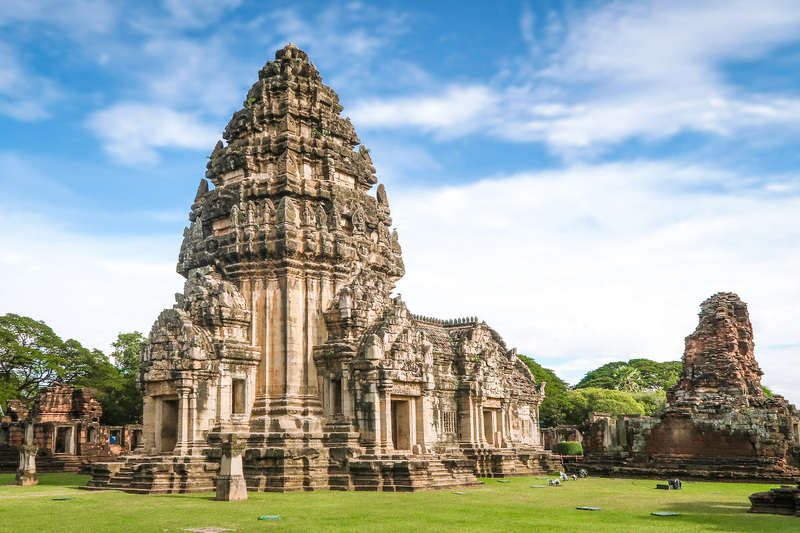
The central prang
Entry to the site is via the Naga Bridge, so called because of the line of nagas, mythical guardian spirits, on each side. It symbolises the passage from Earth to heaven and leads on to the Southern Gate. Unusually, the complex faces southeast towards Angkor rather than east as most Khmer temples do. Somewhat confusingly, prasat, the word used to describe the Inner or Central Sanctuary, is also used to refer to the entire temple complex as a whole. The majestic central prang (one of three), towers over the surrounding structures of libraries, galleries and gopuras, entrance pavilions.
Although Phimai’s architectural style is very similar to that of Angkor - and indeed may have influenced the design of Angkor Wat - the origins of many structures within the complex show evidence of Buddhist and pre-Buddhist influence. The temple’s beautifully carved pediments and lintels show scenes from the Ramayana and also uniquely for a Khmer temple Buddhist themes. At the very centre of the prangsits a statue of the Buddha seated atop a coiled naga(serpent) in the Bayon style.
The Northern Porch features a lintel depicting a three-headed, six armed Vajrasattva (a Diamond Being or Thunderbolt Being – a guardian spirit in the Buddhist tradition) below which is a group of crouching dancing girls. Another scene from the Ramayana, on the Northern Pediment of theprang, shows Vishnu holding a staff, a conch, a lotus flower and a discus, all highly symbolic and all exquisitely executed in typically classic Khmer fashion.
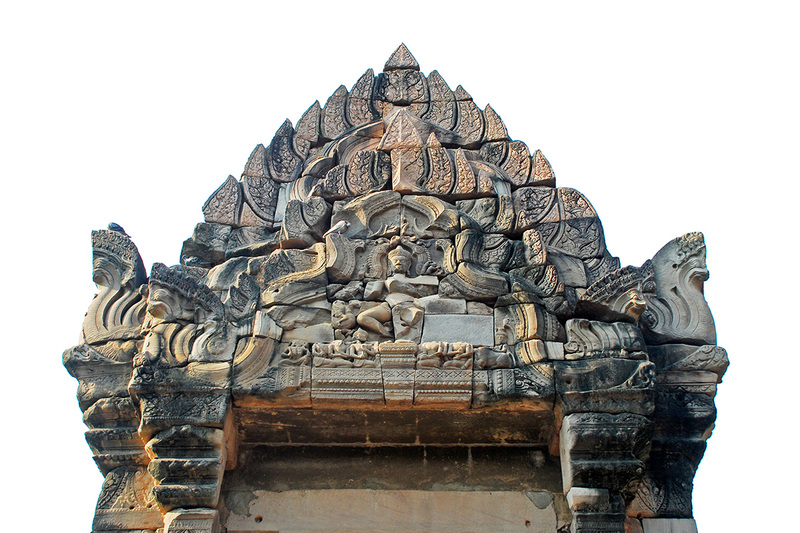
Every lintel tells a story
Getting to the Phimai Historical Park, almost 300 kilometers north of Bangkok, requires that you first get to Nakhon Ratchasima town, which can be done either by air-conditioned bus from Bangkok’s Morchit bus terminal or by train from Hualamphong station in Bangkok. You should expect the journey to take about five to six hours. Once you have arrived in Nakhon Ratchasima you need to take a local bus to Phimai, a journey which should take about an hour.
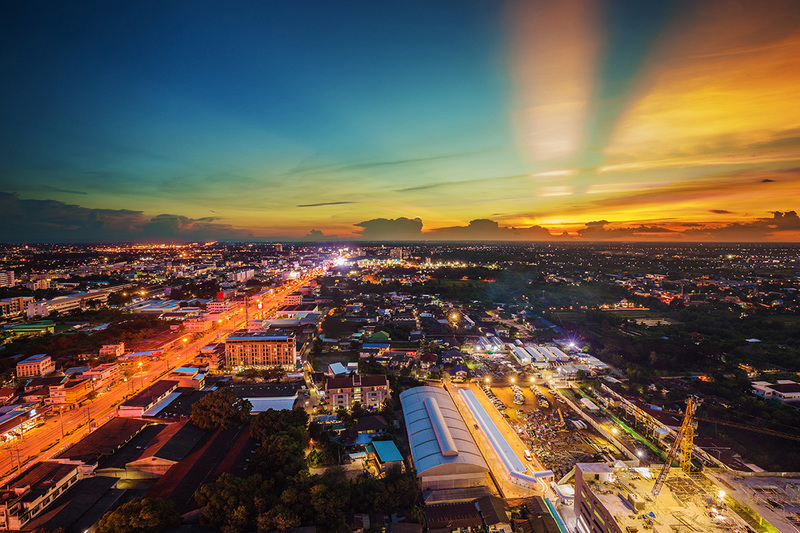
Nakhon Ratchasima from the air at sunset
Although the trip may seem arduous you are more than compensated for the trouble with an incredible experience of seeing one of the finest examples of classical Khmer architecture, a testament to the astonishing ingenuity and artistic flair of one of Southeast Asia’s most potent and influential empires.










of collaborative energy




Before proceeding to use the website please carefully ready our Terms and Policies
I accept Diwerent's Terms and Conditions and Privacy Policy










